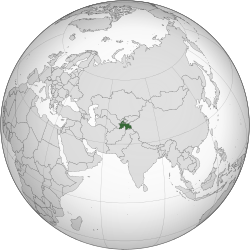
Tajikistan is a country located in Central Asia. Tajikistan's economy is largely directed by agriculture [1] and has a dependency on the production of cotton and aluminum. [2] In 2021, Tajikistan was one of the world's largest producers of antimony. [3] The three main import partners of Tajikistan in 2019 were Kazakhstan, Turkey, and Luxembourg [4] and the three main export partners of Tajikistan in 2019 were Turkey, Switzerland, and Uzbekistan. [5]